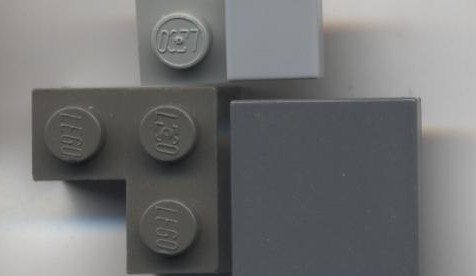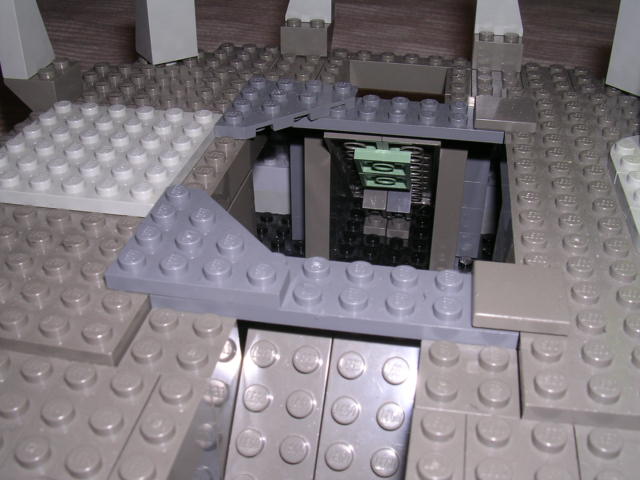LEGO’s Grayscale Color War

“Gray and Blay,” one LEGO fan notes, “is one of the greatest conflicts in LEGO history.” He’s right. Ask any AFOL — that stands for “Adult Fan of LEGO,” and yes, it’s a thing — and you’ll almost certainly find out that he or she has an opinion on the debate. For the rest of us, it requires some explanation, because you probably didn’t notice that LEGO changed things up in 2004.
To start, let’s take a look at the image below (via LEGO fan site BrickingTips):

The bricks on the left — the ones with the studs — are the old grays, termed “light gray” and “dark gray.” The ones on the right — the tiles — are the newer ones. They’re called “light bluish gray” and “dark bluish gray,” respectively. If you buy a LEGO set today, the gray bricks will be in the hues on the right. If you have an older set — from before 2004 — they’ll be the ones on the left.
For younger kids, who by definition weren’t around to play with LEGOs in 2004, this didn’t matter. But for grown-ups? The switch wasn’t a very positive experience.
The community labeled these new bricks as “blay” colored — that’s “blue” plus “gray” — and objected to the fact that “most of the time they look awful if used together with the existing old gray pieces,” per one AFOL, who shared the following example:

Others noted that the experience above happened inconsistently; in some lighting, gray and blay looked almost the same, but in other situations, you had outcomes like the above. That meant trouble if you were building an old, gray-heavy set and you ended up buying some bricks on eBay, you could end up getting a different product than you expected (and, perhaps, than the seller thought as well). Some adult fans of LEGO, per the LEGO-centric Wikipedia-style website BrickWiki, “refuse to purchase models containing any of the new colors” altogether, out of frustration with the decision.
So, why the change? Coincidentally, there was Mega Bloks.
Mega Bloks are a LEGO competitor — one often viewed as lower quality but at the tradeoff of being cheaper — and they’ve been around since the 1960s. For decades, Mega Bloks was a far second place to LEGO’s dominance, but around 2002, the gap closed. Mega Bloks was surging even though the sector was in a downturn. Rumors around AFOLs spread, with the conspiracy theory du jour being that LEGO’s brighter blays were intended to make Mega Bloks’ grays seem bland.
Officially, that’s not the truth. A few years later, a LEGO Community Liason told AFOLs that the reason for the change was “to create a sustainable and consistent color palette for the future.” But regardless of the reason, the LEGO team acknowledge that making such a change — without input from their community — was a mistake: in the same note, the liaison states that “we fully acknowledge and apologize for our poor implementation.”
Bonus fact: On a per-unit basis, LEGO is the world’s largest manufacturer of tires. (Just don’t expect them to be suitable for your non-LEGO SUV.)
From the Archives: Shadow Boxing: The optical illusion that makes you think there are two different shades of gray. But there aren’t.
Related: “LEGO: A Love Story” by Jonathan Bender; it’s a look at the life of AFOLs.
